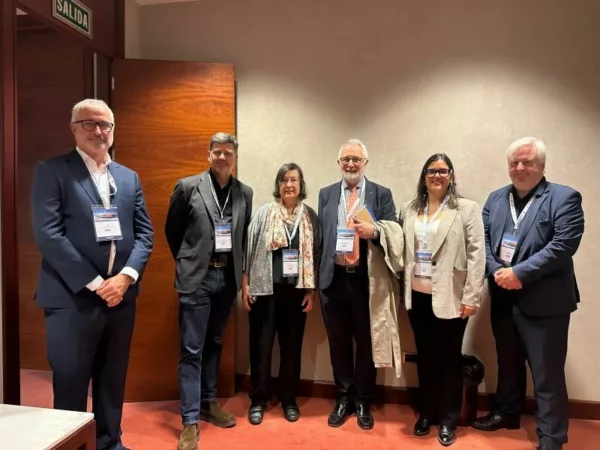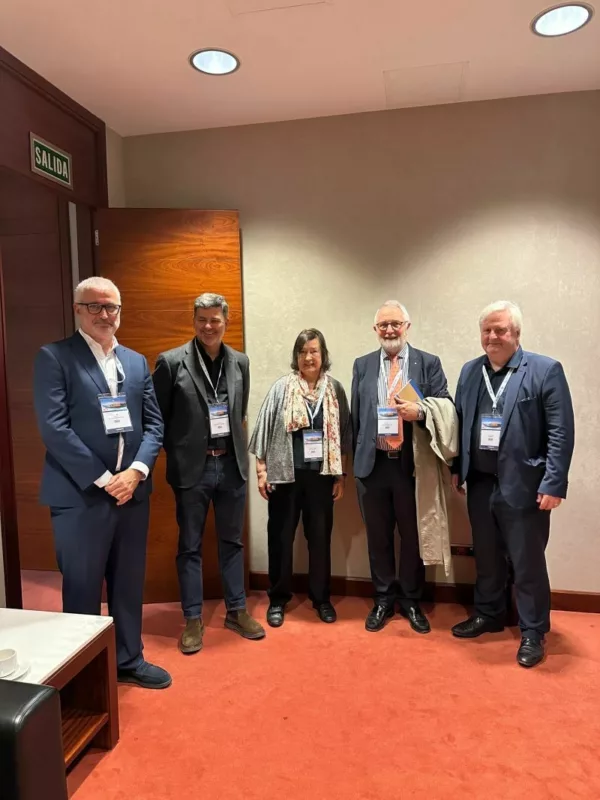Health in Continence: Insights from Plenary Session 4
Continence health is gaining long-overdue attention. At SINUG’s Plenary Session 4, experts, policymakers, and patient advocates came together to spotlight the urgent need for awareness, better outcomes, and stronger institutional commitment in this often-overlooked field.
On the 7th of November, the EAU Patient Office and the EAU Policy Office attended the Sociedad Iberoamericana de NeuroUrología y Uroginecología (SINUG) Congress in Vigo. SINUG is a leading reference point in the Spanish- and Portuguese-speaking world for advancing knowledge in functional urology, pelvic floor disorders, and continence care. Its annual congress brings together specialists, researchers, policymakers, and patient organisations to exchange emerging evidence and drive innovation in these rapidly evolving fields.
Moderated by Pedro Blasco Hernández, from SINUG, and Elena Plana, from the EAU, Plenary Session 4, “Health in Continence: The Challenge,” held with the collaboration of Astellas Pharma, highlighted the urgency of improving awareness, clinical outcomes, and institutional responsibility in this often-overlooked health domain.

Advocacy, value-based care, and patient empowerment in continence health
The session opened with Philip Van Kerrebroek, Executive Board Member of the EAU who presented “Why talk about continence? Initiative Urge to Act.” Van Kerreboreck presented the Urge to Act campaign, led by the EAU, which aims at raising awareness among policymakers and civil society on continence health. He emphasised the importance of advocating with our policymakers, being at the EU, national or regional level to make sure continence health is considered in all policies.
The discussion then shifted toward measuring value in healthcare with Eamonn Rogers, who explored the role of Patient-Reported Outcome Measures (PROMs) within a Value-Based Healthcare framework. Rogers highlighted how PROMs can reshape clinical practice by placing patients’ own assessments at the center of evaluation, driving better decision-making, resource use, and long-term outcomes in continence management.
From the patient perspective, Mary Lynne Van Poelgeest, President of the World Federation of Incontinence and Pelvic Problems (WFIPP), delivered a compelling talk on the “Vision of the Patient in the 21st Century.” She outlined evolving expectations for personalised, accessible, and stigma-free care. Her message emphasised empowerment, digital innovation, and the growing role of patient organizations in shaping policy and research agendas.
The role of institutions in continence health
Closing the session, Nicolás González Casares, a Spanish (and Galician) Member of the European Parliament, addressed the “Role of Institutions in Continence Health.” He highlighted the responsibility of European institutions to support research, promote equitable access to care, and integrate continence health into broader public health priorities. His remarks pointed toward a future where continence care is recognised as essential to healthy aging and overall well-being. Moreover, he stressed the importance of evidence-based policy making to fight against the raising trend of misinformation in health. He called for all experts getting involved in healthcare advocacy.
Together, the speakers painted a comprehensive picture of the challenges - and opportunities - facing continence health today. Their insights reinforce the need for collaboration across clinical, institutional, and patient communities to ensure dignified, effective care for all individuals affected by continence issues.

